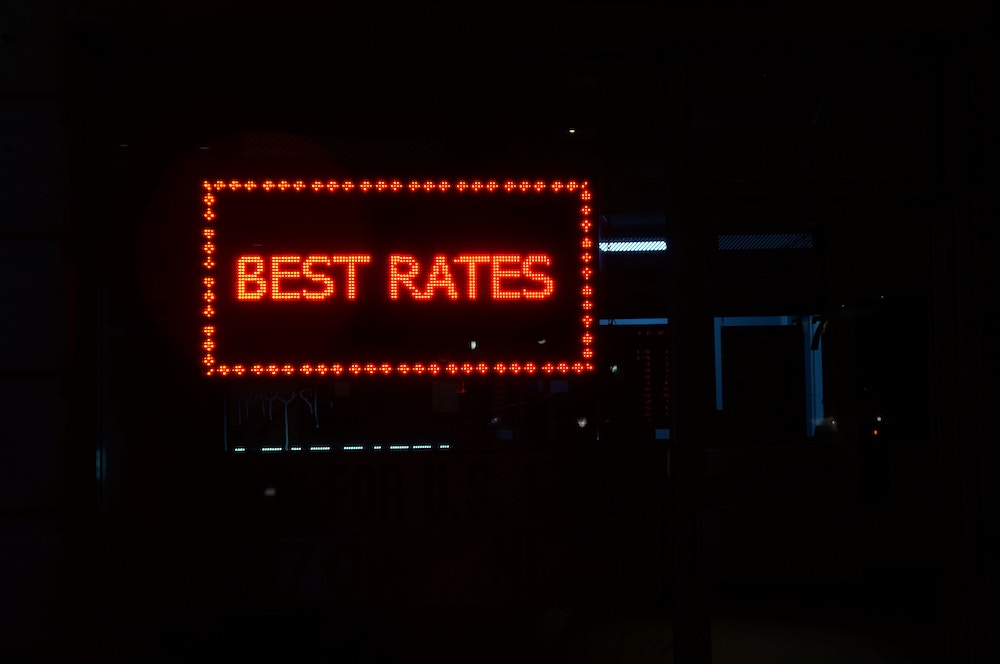In the ever-evolving landscape of financial planning and wealth management, whole life insurance dividend rates stand out. Unlike other tools, whole life insurance offers an alternative investment for those looking to get out of the Wall-Street casino.
One of the key elements that distinguish whole life insurance policies is the concept of dividends. In this comprehensive guide, we will dive into what whole life insurance dividend rates are, why they matter for strategies like leveraging life insurance and Infinite Banking, and how they can play a pivotal role in your financial strategy.
The Power of Whole Life Insurance

A Trusted Financial Instrument
When it comes to securing your family’s financial future, whole life insurance has been a trusted choice for generations. Unlike term life insurance, which provides coverage for a specified period, whole life insurance offers lifelong protection.
But it doesn’t stop there. It also includes a savings component known as the cash value, which sets it apart as a multifaceted financial instrument.
Understanding the Unique Aspect: Dividends
Whole life insurance dividends represent a compelling option that can have a substantial impact on your finances. But before we dive into the details, let’s clarify what we mean by “whole life insurance dividend rates.”
Definition of Whole Life Insurance Dividend Rates
First, what are dividendds?
Dividends are the portion of an insurance company’s profits distributed to the policyholders who own participating whole life insurance policies. These dividends are not guaranteed but are often paid by established mutual insurance companies.
One company that we at Wise Money Tools often use for these types of dividend paying policies has paid a dividend since 1869. They are not guaranteed, but very reliable when using a quality company.
Dividend rates are related, but different. Whole life insurance dividend rates represent the annual interest or rate of return paid by mutual insurance company. This dividend goes to their policyholders based on the cash value portion of their whole life insurance policies.
These rates serve as a key factor in determining the growth of the policy’s cash value over time.
Like a bond, the rate paid on whole life insurance is the amount of growth the policyholder would realize.
Now let’s look at these dividend rates historically, and why they matter.
The Study on Life Insurance Growth (1996-2017)
Historically, high-quality whole life insurance companies have a track record of steady growth. A study conducted from 1996 to 2017 revealed that one top life insurance company offered an average of 7.58% annual growth.
This consistent growth is a testament to the reliability of whole life insurance as a financial tool when structured properly. You can explore the details of this study here.
Now, let’s explore the world of dividends in whole life insurance and why they are a critical component for growth.
Understanding More About Dividends and Rates in Whole Life Insurance

How Life Insurance Companies Generate Dividends
But how do life insurance companies generate these dividends?
Dividends are primarily generated through the insurer’s investment income and the performance of its participating policies. Insurance companies typically invest the premiums they collect in a diversified portfolio, which includes bonds, stocks, and other assets. The returns generated from these investments contribute to the company’s profits. A majority portion of this is distributed to policyholders as dividends.
These policy dividends come with many different benefits from the life insurance companies.
Benefits of Whole Life Insurance Dividend Rates
Guaranteed Minimum Returns
One key reason why dividend rates matter in whole life insurance is that they are a source of returns. While dividend rates are not guaranteed, many mutual insurance companies have a long history of consistently paying a guaranteed minimum dividend rate.
This provides a degree of predictability and stability to the overall returns of the policy.
Potential for Higher Returns
Dividend rates offer the potential for higher returns compared to other conservative financial instruments like bonds. While the stock market may offer higher returns over the long term, it also comes with greater volatility and risk.
In contrast, whole life insurance dividend rates provide a reliable source of additional growth without the market’s unpredictability.
Tax Advantages
Another significant advantage of whole life insurance dividend rates and earnings is their tax treatment. The growth within a whole life insurance policy, including any earnings from dividends and the dividend rate, is tax-deferred. This means that you won’t be taxed on the gains as they accumulate within the policy.
Additionally, when you earn gains through these dividend rates, the withdrawals are typically tax-free. This is the reason loans are typically taken over liquidating capital.
Now that we’ve established what the benefits of whole life insurance dividend rates and why they are significant, let’s explore how these dividend rates matter specifically in the context of strategies like Infinite Banking.
Now let’s look more specifically at Infinite Banking and dividend rates and why it matters.
Why Dividend Rates Matter for Infinite Banking

Infinite Banking is a financial strategy that relies on the use of whole life insurance policies to create a personal banking system. It is centered around the idea of maximizing the benefits of these policies, and dividend-paying whole life insurance dividend plays a crucial role in achieving this goal.
Why High Dividend Rates Matter
Infinite Banking policies not only provide a death benefit but also serve as a vehicle for accumulating cash value over time. What sets these policies apart is their potential for significant growth, and this growth is intricately tied to the concept of dividend rates.
Dividend rates play a pivotal role in the success of Infinite Banking. When you choose a whole life insurance policy for your Infinite Banking strategy, the dividend rate determines the rate at which your cash value grows within the policy. Higher dividend rates translate to faster cash value accumulation, which is the lifeblood of your Infinite Banking system. This accumulated cash value can then be accessed and leveraged for various financial needs, such as investments, education expenses, or retirement planning.
The Importance of Professional Guidance
While Infinite Banking offers a powerful financial strategy, navigating the complex world of whole life insurance and dividend rates can be daunting. This is where the expertise of a financial professional becomes invaluable. Insurance companies vary in their dividend rates, financial stability, and historical performance. Finding the best life insurance company with a strong history of high dividend rates is essential to maximize the potential of your Infinite Banking policy.
At Wise Money Tools, we recognize the paramount importance of growth in the context of Infinite Banking. That’s why we meticulously select life insurance companies with the highest dividend rates, both historically and in recent years, to use for our clients’ Infinite Banking policies. We understand that our clients rely on us to provide them with the best possible tools for their financial success, and this begins with choosing insurance partners that share our commitment to growth and financial empowerment.
No matter who you decide to work with, make sure your agent helps you select companies with a high historical dividend rate.
Whole Life Dividend Rates Compared with Bonds
Even though the point of Infinite Banking, ultimately, is to have access to funds to make better investment decisions, we can’t escape looking at how life insurance compares to the market’s most beloved safe investment: bonds.
How do they compare?
When it comes to long-term wealth accumulation and financial planning, whole life insurance dividends have consistently demonstrated their superiority over traditional bonds. Over a span of several decades, historical data indicates that whole life insurance policies have outperformed bonds by a noteworthy margin, typically averaging about 1.5% higher growth annually over a 50-year period.
The key to this consistent outperformance lies in the unique blend of factors that whole life insurance policies offer. These policies are crafted to combine a certain degree of risk with the security of safe, diversified investments. Life insurance companies carefully manage their portfolios, ensuring that they include a mix of assets that provide stability and growth potential.
This combination allows these companies to achieve better returns than bonds, which are often considered safer but offer lower growth potential. Beyond the growth rates, whole life insurance policies offer additional advantages that bonds simply cannot match. The tax advantages, death benefit, and easy access to money associated with life insurance makes it a highly efficient and attractive vehicle for wealth accumulation.
More Benefits of Whole Life Insurance and Infinite Banking

Dividend-paying life insurance policies offer a range of benefits that extend beyond their core purpose and dividend rates. These additional advantages make them versatile tools for various financial goals.
Here are some key benefits to consider:
1. Death Benefit
The primary function of life insurance is to provide a death benefit to the beneficiaries named in the policy. This lump-sum payout, typically tax-free, offers financial security to your loved ones in the event of your passing. It can cover immediate expenses, such as funeral costs and outstanding debts, as well as provide long-term financial support, such as replacing lost income or funding education for your children.
2. Access to Money or Liquidity
Life insurance policies, particularly whole life and universal life, offer a unique source of liquidity. You access the cash value within these policies through policy loans or withdrawals to avoid taxes. This provides policyholders with a valuable source of funds for various needs, including emergency expenses, debt repayment, or investment opportunities.
Unlike traditional loans, policy loans do not require a credit check, and the interest paid on these loans often goes back into the policy.
3. Tax Advantages
Life insurance policies come with a set of tax advantages that can significantly impact your financial situation. The cash value within these policies grows tax-deferred, meaning you won’t owe taxes on the growth until you withdraw it.
Additionally, policy loans are typically tax-free, allowing you to access funds without incurring immediate tax liabilities. The death benefit, as mentioned earlier, also transfers to beneficiaries tax-free.
4. Wealth Transfer and Estate Planning
Life insurance plays a crucial role in estate planning and wealth transfer. It provides a tax-efficient way to pass on assets to your heirs or designated beneficiaries. By naming beneficiaries directly in the policy, you can bypass the probate process, ensuring a swift and private distribution of assets.
This makes life insurance an essential tool for individuals looking to create a lasting financial legacy for their loved ones.
5. Supplemental Retirement Income
Certain types of life insurance policies, such as indexed universal life, can be structured to provide supplemental retirement income. Policyholders can accumulate cash value over time and use it as a source of tax-advantaged income during their retirement years.
This adds an extra layer of financial security and flexibility to retirement planning, allowing individuals to diversify their income sources.
6. Charitable Giving
Life insurance policies can also be utilized for philanthropic purposes. By naming a charitable organization as the beneficiary of a policy, you can leave a significant legacy and support causes that are meaningful to you.
This approach allows you to make a lasting impact on the community or causes you care about, while potentially providing tax benefits for your estate.
These additional benefits of life insurance policies highlight their versatility and their potential to serve various financial needs. When structured and managed strategically, life insurance can be a powerful tool for building wealth, protecting your loved ones, and achieving your long-term financial goals.
Variability of Whole Life Insurance Dividend Rates

While we’ve discussed the significance of dividend rates, it’s important to acknowledge that these rates are not fixed. They can vary depending on several factors, and this variability is an aspect you should be aware of in your financial planning.
Explanation of How Dividend Rates Can Vary
Dividend rates are influenced by various factors, including the performance of the insurer’s investments, the overall financial health of the company, and prevailing economic conditions. It’s important to note that while dividends are not guaranteed, established mutual insurance companies have a track record of consistency in dividend payments.
Selecting a Reputable Insurer
Given the variability of dividend rates, choosing a reputable insurer is a key consideration. A company with a history of consistent dividend payments demonstrates financial stability and reliability. This ensures that your financial plan remains secure, with the potential for growth through dividends intact.
That’s why having an agent fluent in whole life policies, who preferably uses them for their own life, matters when starting a life insurance policy for Infinite Banking.
Leveraging Whole Life Dividends for Steady Growth

In the world of financial planning, achieving consistent and steady growth is a coveted goal. Whole life insurance dividend rates provide a unique opportunity to accomplish just that. Leveraging the cash value and dividends within your policy can open doors to a world of financial possibilities.
Steady Growth Through Dividends
One of the remarkable features of whole life insurance is the steady growth it offers. As we’ve discussed earlier, a study spanning over two decades showed that life insurance policies grew by an average of 7.58%. This consistent growth attributed to the dividends paid by mutual insurance companies to their policyholders.
These dividends act as a reliable source of additional growth within your policy, regardless of the economic climate. While the stock market can experience volatile fluctuations, the dividends paid by established mutual insurance companies tend to remain stable. This stability aligns with the risk-averse nature of individuals seeking financial security and growth.
Understanding Bank Loans and Cash Value Line of Credit (CVLC)
To fully grasp the power of leveraging whole life insurance dividends, it’s essential to understand how bank loans work within the context of your policy. When you own a whole life insurance policy, the cash value represents a valuable asset. You can use this asset as collateral to secure a loan from a financial institution, similar to how you might use your home’s equity to obtain a home equity loan.
A Cash Value Line of Credit (CVLC) is a financial tool that allows you to borrow against the cash value of your policy. This means that you can access funds by leveraging the growth and value within your policy without liquidating it. The key advantage here is that your policy continues to grow, even while you utilize the funds for other purposes.
Historical Spread and Dividend Strategy
Historically, a spread of around 2% exists between the interest rate charged on policy loans and the dividend rate credited to the policy. This means that, on average, policyholders have been able to borrow funds at a rate roughly 2% lower than the rate at which their policies are growing.
This spread creates a powerful financial strategy. By taking a policy loan and reinvesting the borrowed funds into opportunities that yield a return higher than the interest rate on the loan, you can potentially earn the difference as additional profit. This strategy, often referred to as the “Spread Strategy,” can significantly enhance your overall financial growth.
Implementing the Dividend Strategy
Here’s a simplified example to illustrate how the dividend strategy works:
- You have a whole life insurance policy with a cash value and a dividend rate of 5%.
- You decide to take a policy loan at an interest rate of 3%. This 3% represents the spread between the loan interest rate and the dividend rate.
- Now you use this loan to purchase more life insurance.
- This new policy begins to grow. Overtime, it begins accumulating enough cash value and grows at the dividend rate of 5%.
- You are able now to take another policy loan from the bank at a lower rate of interest than the policy dividend growth rate.
This strategy showcases the potential for financial growth by leveraging whole life insurance dividends and a cash value line of credit. It’s a method that empowers you to take control of your financial resources, access funds when needed, and benefit from the steady growth of your policy.
Unlocking Your Financial Potential

Incorporating whole life insurance dividends into your financial strategy is a game changer. This can be done through Infinite Banking or other dividend strategies. These dividends offer the opportunity for consistent growth, safety, and tax advantages that few other financial instruments can match.
As you explore the possibilities of whole life insurance and related concepts like Infinite Banking, Private Family Banking, and Bank-Owned Life Insurance (BOLI), you are taking important steps toward unlocking your financial potential. By understanding how dividends work, their significance, and their potential for growth, you can make informed financial decisions that align with your long-term goals.
Remember that the historical spread of around 2% between policy loan interest rates and dividend rates creates a unique opportunity for financial leverage and growth. Leveraging whole life insurance dividends is not just a strategy; it’s a pathway to financial empowerment and wealth accumulation.
To take practical steps toward implementing this strategy, consider setting up a whole life insurance policy with dividends through our guide on How to Setup an Infinite Banking Policy.
As you embark on your journey, keep in mind that the potential for steady growth and financial success lies within your grasp, thanks to the power of whole life insurance dividends.
At Wise Money Tools, we’re committed to guiding you through the landscape of smart investing. Sign up for our free toolkit for access to helpful resources including reducing taxes, leveraging life insurance, and Infinite Banking
Need more personalized advice? Contact us directly – we’re here to help. Visit Wise Money Tools today.



